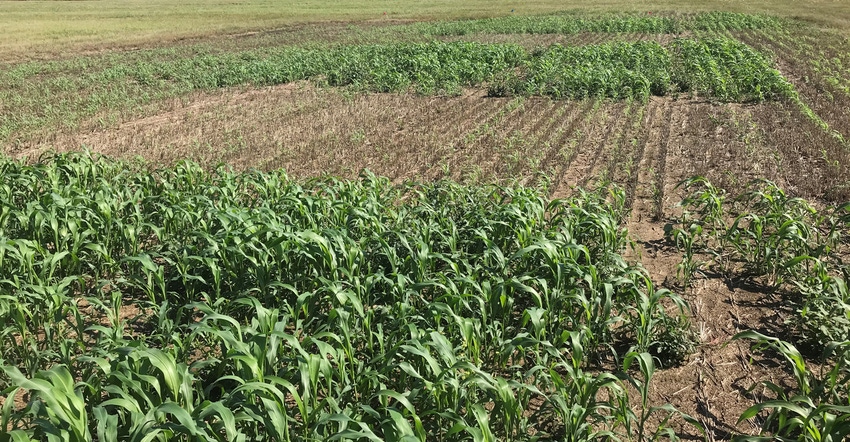January 19, 2022

In 2020, I discussed an experiment we conducted for winter-killed alfalfa.
The original concept: As soon as you determined the stand was dead or nearly dead, you could no-till red clover, or red clover and oats, to reestablish a forage legume for the next three years. Alfalfa allelopathy had no effect on either crop.
Another alternative was to no-till oats and harvest at boot stage in early June. Then, come back and no-till brown midrib (BMR) sorghum or sorghum-sudangrass for a summer energy crop. It is harvested in early September, and winter triticale is planted after that. The winter triticale is harvested for forage, and then your alfalfa is no-tilled into the triticale stubble to reestablish the alfalfa forage crop.
We tried the first part of planting oats followed by sorghum. As we reported before, it was a spectacular failure. The sorghum did not grow at all. We speculate that the oats had an allelopathic effect on the sorghum. So, we strongly suggested to not try this practice.
To determine if this was a fluke of weather or a real issue, we repeated the study last year, but we added another variable to the test: After harvesting the oats, for part of the oat plot we lightly tilled — 1 to 2 inches deep — with a disk to break up and incorporate the top inch or two of soil. We then planted the sorghum-sudangrass.
The results can be seen in the picture below.

SORGHUM ALTERNATIVE: Sorghum-sudangrass is planted from the bottom of the picture to the top; the bottom left is no-till sorghum into oat stubble. Nearly all of this is oat tillers regrowing. The bottom right is sorghum no-tilled into bare fallow soil. The top strip from left to right is oat stubble that was lightly disked and then planted to the sorghum. It grew the best of all.
The fallow ground in the right bottom of the picture grew fine. The oat stubble no-tilled to sorghum in the bottom left did not grow at all; what you are seeing are some oat tillers that regrew.
The lightly tilled ground across the back of the picture where the farm manager is standing — whether in fallow or oat stubble — grew very well with no issues from the oat allelopathy.
This method solves two problems in one pass with the disk: First and most important, it breaks the allelopathy to allow the sorghum to grow. Second, it is a perfect time to add manure to meet the NPK needs without purchasing more expensive fertilizer. Spreading manure and immediately incorporating it will more than triple the amount of nitrogen your crop can get from the manure. It does this without adding excessive phosphorus.
Thus, you can grow the crop on just manure, which is critical in this time of high fertilizer prices. It also allows you to empty the manure storage in early June, at least in New York, so you are not pressured to put manure on hay ground in the middle of the growing season.
Sorghum is the perfect setup to be followed by no-till winter triticale for forage. Both will regrow in the fall until the first frost kills the sorghum. The triticale continues to grow and is protected from harsh winter by the dead sorghum stubble, which gets flattened by the snow. The next spring, you can harvest 2-4 tons of very high-quality forage — better than BMR — as the first forage cut.
As I’ve written about before, this leaves the field in perfect condition to no-till alfalfa in early June after you have finished harvesting your haylage. We have consistently gotten much better seedings planting them at this date and taking advantage of the stubble to keep the small seedlings growing optimally.
Kilcer is a certified crop adviser in Rutledge, Tenn., formerly of Kinderhook, N.Y.
About the Author(s)
You May Also Like




